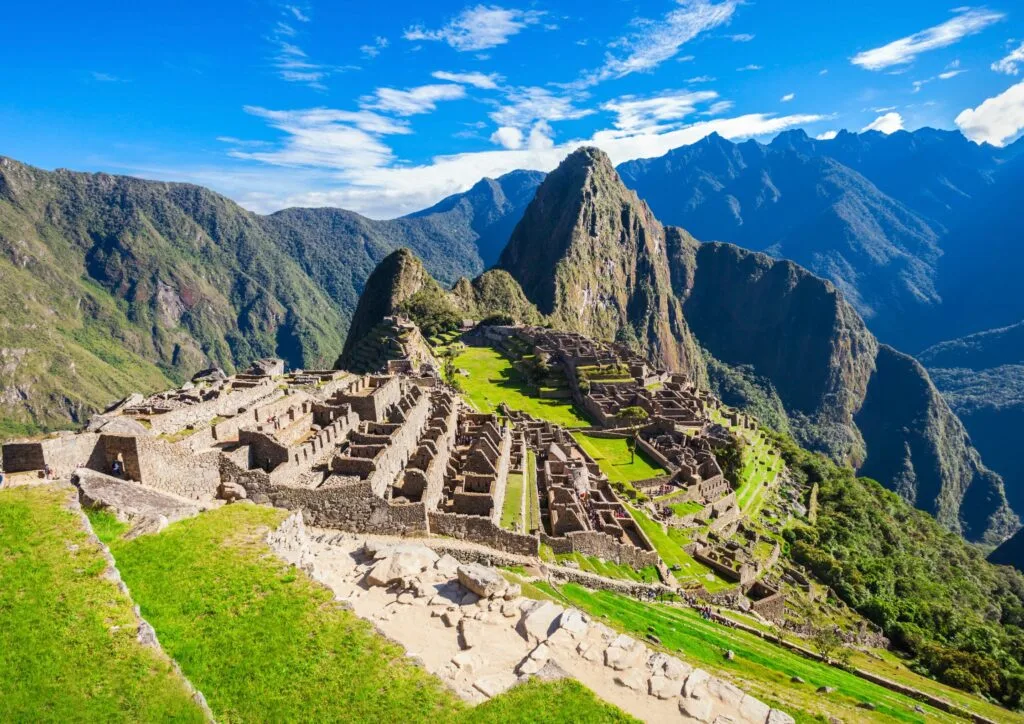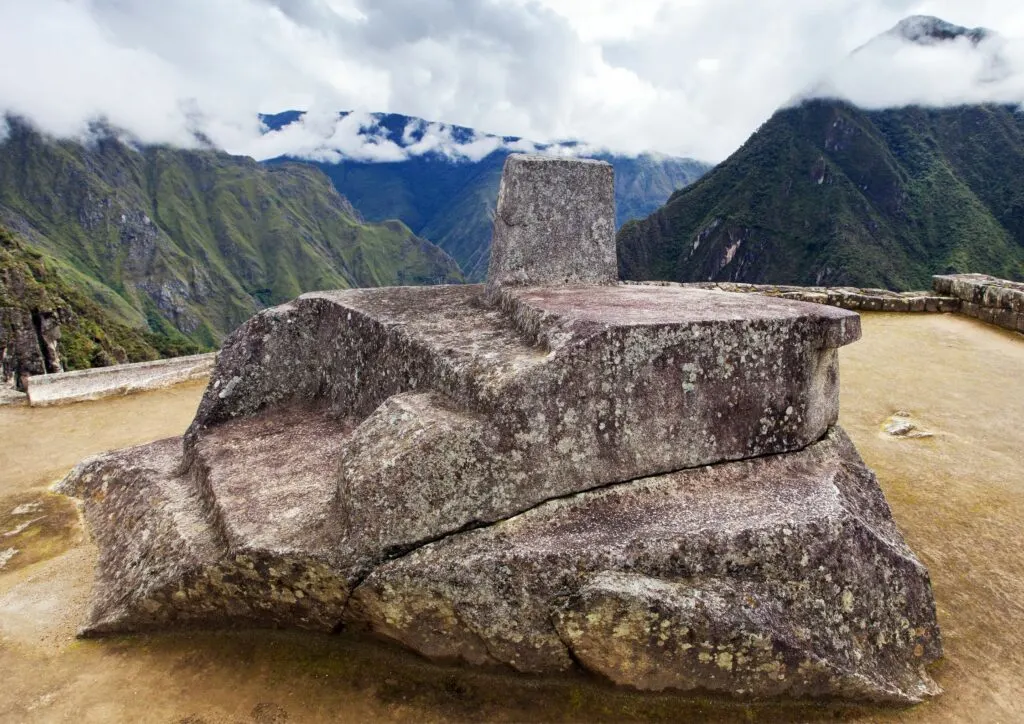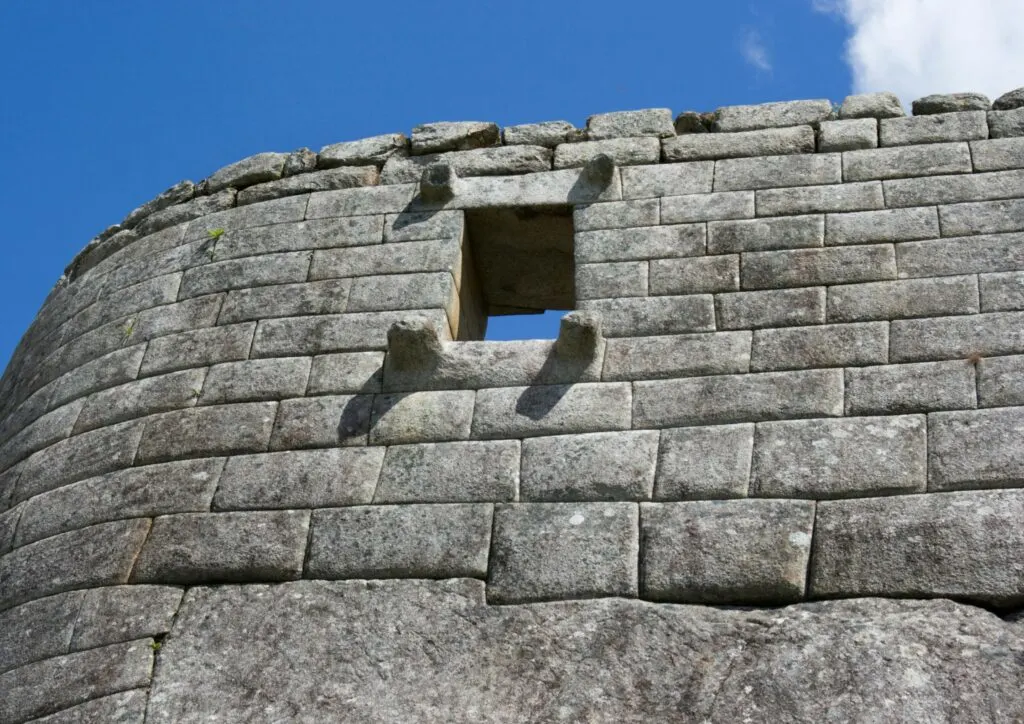This ancient Jewel was more than just a historical city of the Incan Empire. The great masonry and engineering feats they achieved at such an ancient time are reflected in every corner of the ruins that remain on the rugged peaks of Mount Andes; which is where we journeyed to explore it up close.
Is it worthy of being on the list of seven world wonders? We were able to find out.
Let’s start with a little history.
The Story behind Machu Picchu
After the re-discovery of this lost Incan empire in 1911, many excavation projects took place to unravel the alluring and mystical mysteries of these ruins.
Using the gathered data, experts were able to determine that this stunning city was brought to life in 1450 AD under the Incan Emperor – Pachacuti.
There is evidence lacking to determine if the Incan community here was driven out by brutal Spanish conquistadors, so some scholars suggest the possibility of a smallpox epidemic.
After being forgotten by the world for a good number of centuries, the ruins of Machu Picchu made a comeback and continue to maintain its reputation as a world wonder.
Let’s see why.
Reaching Machu Picchu

To get to Machu Pichu the final stop we made was Aguas Calientes. You can reach this town by private transportation, bus or train. We chose the train from Cusco to Aguas Calientes (it’s available daily).
While this is the cheapest option it also travels past some of the most scenic valleys you’ll witness in Peru. This 4-hour ride was insanely picturesque. Also, the train windows are huge, and you can open them wide and enjoy.
The town of Aguas Calientes is small but lively – there’re some lovely restaurants and inns. The reason we reached this town the day before the trip was that the shuttle services to Machu Pichu depart at 5.30 a.m. We needed to buy our tickets and get some rest before our journey.
We were told to arrive at the collecting point by 4.30 a.m. (at least). Though we arrived at 4 a.m. there was already a line waiting for the shuttle. By 4.30 a.m. the line was already longer than 40 odd people (so don’t be late!)
The bus departed on time. In less than 40 minutes, we were at the base of Machu Picchu waiting in the chill for the entrance to open at 6 a.m.
*Note: Dress to stay warm. The early mornings can be misty and chilly.
The Entrance
If you succeeded in lining up at the entrance, as the gates open at six, you could rush in to grab some scenic captures of the ruins against the misty natural backgrounds before it gets crowded.
Reach the peak and get as many pics as you want, enjoy the views as much as you can and keep moving.
Touring the Citadel
If you were attempting to grab some videos/photos and suddenly a thick veil of mist covered the background – don’t worry! It’ll dissipate in several minutes. Don’t rush because some of the grassy trails or stone steps can be uneven.
There’s something surreal about seeing this place with your own eyes, the smell of fresh chilled air against the ancient structures disappearing amidst the mist…It’s insane.
We were informed by a Peruvian tour guide that Machu Picchu was made up of over 150 buildings -including houses, temples, and even bathhouses.
Moving on, we did explore the most anticipated areas of this place starting with the Sacred Plaza, which includes the famous Intihuatana, the Hall of the Three Windows and the Temple of the Sun.
Intihuatana Stone

At first glance, the Inhuatana doesn’t look much. Apart from the faded carvings, the sundial blends in with the rest of the ruins. We learnt that this was an essential tool used by the Incan astronomers that was used to predict the solstices.
The sundial was built to perfection so that at midday – when the sun is positioned right above the pillar, it doesn’t cast a shadow. How insane were their calculations to be so accurate? Mind-blowing!
Sun Temple

Next the Sun Temple – immediately struck out because of its semi-circular shape. There’s strong evidence to suggest that this was a place accessed only by the high priests and nobility – for sacred rituals.
The stone bed within looked so smooth. You’ll spot a window to the east – suggesting that when the sun rises, the light enters through the window and falls on the smooth carvings of the stone inside it.
Temple of the Three Windows

The Temple of the Three Windows was also incredible. You cannot miss it. This spot offers some of the most gasp-worthy sceneries of Mount Andes and Machu Picchu as a whole.
The 3 windows are cut smoothly, just like most ruined structures here. But you’re left to wonder how were these thick frames cut so precisely at such an ancient time.
To be honest, all the structures here demand your close attention because they’re so large, yet so cleanly cut and fitted with such precision. (It’s even more insane to find out that the stones were dragged up the hill) When you arrive either by hiking or by using the shuttle – like we did, you’ll figure out why this is insane.
Some of these structures had very slim doors, so if you were carrying a bulky backpack, you’d need to remove it to enter. Some spaces also had small windows, and they looked private – we were almost sure they were bedrooms.
After further observation we realized that the temple stone structure was perfect and precise, the noble houses had a near-perfect structure, while the commoner’s houses were more ruggedly built.
We moved on to observe the Central Plaza, it’s grassy. Here you’ll see many adorable and unbothered llamas. They looked friendly, but we didn’t want to invade their space.
We also visited the Agricultural areas – again it was beautiful. There were several groups with tour guides explaining how the Incan people managed their agriculture.
The large terraces we saw here almost descend till they disappear behind the mist – after all, we were at a very high elevation. The incredible thing is that the actual landscape is rock – so to make the food grow, the Incas had to transport soil to the city, layer them about three feet on top with a layer of sand underneath, then rock and actual Earth. It’s truly incredible.
If you’re planning to explore any area other than just the inner city of Machu Picchu, we strongly suggest getting a tour guide.
Things To Avoid
– Don’t carry food inside (Water bottles are allowed)
– There’re no litter boxes along the trail, so please don’t litter the place inside, there will be penalties if caught.
– Stay on the marked foot trail, and don’t create bottlenecks by trying to revisit a place you have already passed – keep moving forward.
– Avoid wearing loose sandals or flip-flops, the trail at some points can be uneven or slippery – so wear proper walking/trekking footwear.
– Don’t invade the space of llamas, they look harmless, but they can spit and bite if you provoke them by trying to pet them.
– Refrain from rushing over to the edge to grab selfies, especially on the route to the Inca Bridge, the path is steep with thin wires to hold.
– Don’t walk right to the edge, when the mist thickens, just wait till the path is clear again. The trail can be rather slippery outside the dry season.
Frequently Asked Questions About Machu Picchu
What is the best season to visit Machu Picchu?
Late March, April, May, September, October, and early November. (June July and August, the seasons are dry but very crowded).
What are the visiting times?
6.00 am to 5.30 pm
Are there days Machu Picchu is closed?
It’s open all year round.
Are there different types of tickets available for visiting Machu Picchu?
- Machu Picchu only
- Machu Picchu and Huayna Picchu Mountain
- Machu Picchu Inca City and a mountain hike
- Machu Picchu Inca city and Huchuy Picchu Mountain
- Machu Picchu and Inca Bridge

